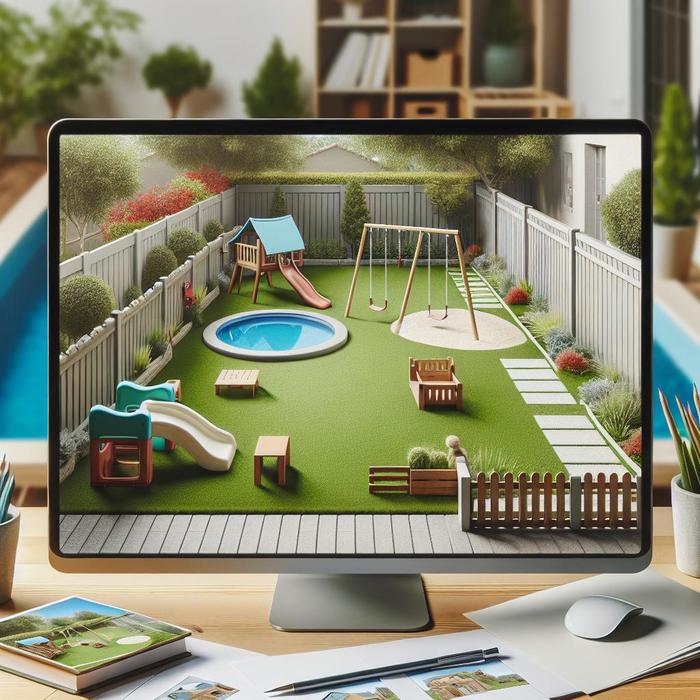Understanding the Importance of Backyard Baby-Proofing
When it comes to child safety, the importance of baby-proofing our homes is well-understood. But what about our outdoor spaces? The concept of backyard baby-proofing is just as crucial, yet often overlooked. In this article, we will deep dive into the strategic steps for creating safer outdoor environments for our young ones.
Assessing Your Backyard: Identify the Risks
The first step in backyard baby-proofing is assessing the environment for potential risks. Walk around your backyard, looking for any potentially dangerous areas or objects. Consider your child’s perspective: What could they be curious about or want to explore? Be on the lookout for:
- Ponds or water features: A significant drowning risk for young children.
- Plants: Some plants can be toxic or cause allergic reactions.
- Tools or garden equipment: Sharp tools or machinery can cause injury.
- Climbable structures: High fences or trees may tempt adventurous toddlers.
Once you’ve identified the risks, it’s time to take action.
Childproofing Your Outdoor Spaces
Implementing outdoor safety tips is the next step in preventing accidents in the backyard. There are several proactive measures you can take:
- Childproof the pool: If you have a swimming pool, ensure it is fenced off, and the entrances are secured with a safety gate. Covering the pool when not in use also adds an extra layer of safety.
- Ensure brick ledges are safe: Brick ledges or elevated features can be a falling hazard. Covering them with padding can reduce the risk.
- Check play equipment: Make sure that all playground equipment is in good repair, with no sharp edges or loose parts.
- Establish safe play zones: Identify areas in the yard where play is safe, and establish boundaries.
Creating Safe Spaces for Children
While baby-proofing the backyard is essential, it’s just as crucial to create positive, enriching environments for our children. You can read more about creating a family-friendly home environment with these tips and tricks. However, don’t forget to apply the same concepts to your outdoor spaces.
Consider:
- Creating dedicated play areas: Having specific areas for different types of play can help nurture your child’s creativity and learning.
- Encourage exploration: While safety is paramount, also allow room for controlled risks. This helps children learn and understand their boundaries.
- Environment-friendly toys: Opt for toys that encourage a deeper appreciation of nature and the outdoors.
Handling Challenges while Baby-Proofing
Despite our best efforts, we may encounter challenges while baby-proofing our backyards. Don’t despair! The techniques that brought us peace when dealing with indoor tantrums can be just as effective outdoors.
If you’re planning a longer getaway, remember that baby-proofing extends beyond the home. Here are some excellent tips for a smooth journey on a road trip with a toddler.
Re-evaluating Your Baby-Proofing Measures
As your child grows and develops, so do their abilities to navigate and manipulate their environment. Therefore, it is essential to continually assess and update your baby proofing measures regularly.
- Monitor your child’s evolving capabilities: Keep track of your child’s development, from crawling to walking, to climbing, and adjust your safety precautions accordingly.
- Stay vigilant: Regularly inspect your outdoor areas for new hazards or risk factors that might emerge with changing seasons.
- Mind the gaps: Make sure to secure any small or hidden spaces where a child might get stuck or hide in.
Refer to the following checklist for a comprehensive guide on baby-proofing both indoor and outdoor areas of your home.
Baby-Proofing Case Studies
To better understand the complexity of baby-proofing your backyard, you might find real-life examples beneficial. These case studies provide insights into various aspects of child safety you may not have considered, especially the importance of professional installation of safety equipment.
Involving Your Child in Safety Practices
While ensuring safety by baby-proofing the backyard, involving your child in the process can be an educational experience for them. Teaching children about potential hazards will empower them to play safely by understanding what to avoid.
- Teach through play: Use play-based activities to demonstrate right from wrong and safe from unsafe.
- Backyard safety basics: Go through the basics of backyard safety. This includes rules about the pool, climbing structures, and other potential hazards.
- Regular reminders: Regularly remind your child about safety rules to help them soak it in and make it a part of their routine.
Baby-Proofing with Style
Baby-proofing does not have to be an exercise in sacrificing aesthetics for safety. With some planning and creativity, you can protect your children while maintaining the backyard’s appeal. Here are some creative ideas for stylish baby-proofing.
- Go minimalist: Reducing clutter and creating clear pathways can prevent your child from tripping or getting hurt.
- Use soft edges: Incorporate furniture and items with soft edges and corners into your outdoor design to reduce the risk of injury.
- Make it colorful: Use colorful safety equipment and toys to create a child-friendly outdoor space that is appealing and fun.
Your backyard can be a wonderful haven for your child to explore and grow. By implementing strategic baby-proofing measures, you not only ensure their safety but also foster an environment where they can freely explore and learn.
